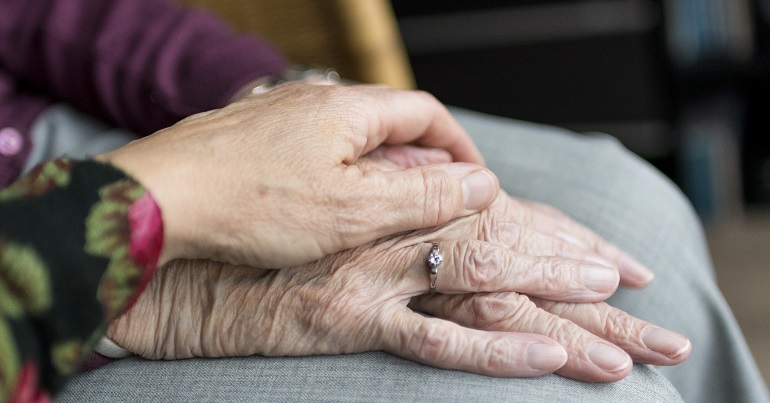Care home privatisation: the destruction of what the NHS built

Last night the House of Lords debated a “regret” motion about “the lack of a long-term plan to ensure the financial sustainability of care homes”.
Such motions are part of the many constitutional oddities of our upper House, having no substantive impact, but being a rap over the knuckles for the government. When I came into the House last year I was told no department likes having it passed against it. Such are the tools of the UK’s semi-democracy.
But expressing regrets about decades of policy over care homes seemed unusually appropriate.
When you start looking into the history it is like an onion, the neglected one at the bottom of the sack – layers and layers of bad decisions made over decades that peel away leave a rotten centre of unmet need and human suffering.
I got interested in this issue in 2016, when I read the brilliant Centre for Research into Economic and Cultural Change (CRESC) report Where Does the Money Go? Financialised Chains and the Crisis of Care Homes on the financialisation of care homes, their treatment by often offshore based companies with complex structures, extracting returns of up to 12% annually while ensuring little or no tax is paid on the returns – often by loading the structures with debt. All of that to provide “care”, of a sort, for our most vulnerable and often frail citizens, the actual work being done by lowly paid, often insecurely employed staff treated with scant respect.
Subsequent events showed the wisdom and foresight of that report, as two of the “Big Five” operators lurched into debt crises. The operators went running to the government to complain that they could not afford modest increases in the minimum wage – and they all too often failed to pay even the legal minimum. There was no suggestion that they should cut the cash being taken out of the system, usually into tax havens.
Peeling back the layers of history shows how this was a situation allowed to develop over many decades.
The origins of privatisation
The starting point is the 1980s. After becoming a world leader in geriatric care through the NHS, the government began withdrawing from provision of care for older and disabled and vulnerable people, leaving it to charitable, and, increasingly, for-profit providers. Some involved in this move had good intentions – the principle was to allow people to live as independently as possible for as long as possible “in the community”, but the practical outcome was profit.
It’s almost been forgotten now that this was a product of a neoliberal revolution, one of the most massive, impactful, and profitable privatisations, the number of private residential home places increasing from 44,000 in 1982 to 164,000 in 1994.
It had the impact of shifting the costs of frailty, illness and disability from all of us, as shared through the state, so we jointly carry the risk, to individuals, something the Dilnot Report sought to continue.
The Blair and Brown governments did nothing to reverse this privatisation, indeed allowed or encouraged it to continue. As with other forms of privatisation, built on the pumping of public money into private hands.
Questioning privatisation from unlikely quarters
Interestingly, last night in the Lords I was not the only peer noting this. Tory Lord Sheikh and non-affiliated former Tory Baroness Wheatcroft expressed concern about the hedge fund and private equity owners, and what they were taking out – for starters £1.5bn a year in rent, debt payments and fees, as did Lib Dems Baroness Tyler of Enfield and Baroness Sheehan.
Awareness of the issue is growing, perhaps because we’re now again in a situation with these major financialised operators complaining that the coronavirus has given them great financial difficulty, due to lower occupancy and costs for Personal Protective Equipment (even though most of the latter is being borne by local authorities).
This despite the fact that the workers in care homes (many of them migrants over whom always looms the horrors of the Home Office Hostile Environment) are doing a stupendous job under enormous pressures and difficulties, with inadequate PPE and Covid-19 testing, with residents disturbed by the loss of family contact and the immense difficulty of dealing with dying patients who cannot see their families.
It isn’t hard to imagine what David Lloyd George – architect of the foundation Old Age Pension Act and Liberal prime minister – who stated ‘How we treat our old people is a crucial test of our national quality” would think of the current situation.
We’re failing the Lloyd George test – for our elders and many other vulnerable citizens – very badly.
PS. We hope you enjoyed this article. Bright Green has got big plans for the future to publish many more articles like this. You can help make that happen. Please donate to Bright Green now.




Good article, but scarred by historical errors and any vision for change. To begin with, the NHS was involved in geriatric clinical practice and hospital care – but crucially not in social care, either domiciliary or (as in terms of the article) residential. That was left to local authorities, and with the result that good practice co-existed with bad. IN addition there were other prodders – charitable, faith based and even back in history – the private sector. Registration and inspection too, was left to local councils, at least up until the CQC was set up. The real issue is of course, the future post Covid. A pessimist, I feel that the issue will simply be swept under the carpet again, as to provide either a new “central care service” or to drastically overhaul and improve the sector to a civilised mode will simply be seen as a call too much on the taxpayer, This, BTW, is the same taxpayer who demands good standard care, but does not want it to be part financed by the care recipients capital. A lot more to say, but not room to say it !
It was more a product of scandal, you would have missed the way people were treated previously, being foreign originated. .
All fine, but don’t let’s get too rosy eyed about Lloyd George. He was acting in a context of seething unrest from below,which very soon saw the rise of the Labour Party to replace the Liberals. The pension was a pittance, paid for with a new regressive tax, disguised as National Insurance, and most people had pegged it long before they qualified: so many false or halting steps, that leave the mass untrusting and confused, unsure who to trust.
I write this not out of historical pedantry, but in the hope of jogging us into raising our sights in our time.
Our environmetal policies do not in themselves offer a socio/political solution to the problems raised by the ecological crisis, and the battle for green awareness has been largely won by the green movement of which we have been a significant part.
The problems are clear, solutions available, but not under our present socio-economic system.
UNIVERSAL BASIC INCOME, set at a level which in combination with the tax system will mean a significant redistribution of wealth, gives us the hope of unity badly needed for the tumultuous times that surely lie ahead, must be our flagship policy.